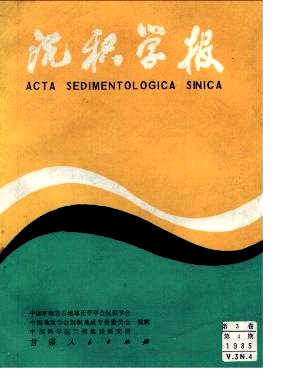DEPOSITIONAL FEATURES, SOURCE AND RESERVOIR ROCKS OF TERTIARY IN NORTHERN PART OF SOUTH CHINA SEA
- Received Date: 1984-03-22
- Publish Date: 1985-12-10
Abstract: The northern part of South China Sea lies in the sea area between 16°00'-23°00' N and 108°00'-120°00'E,covering an area about 400,000km2.There are wildely distributed the Tertiary deposits of which the thickness is over 10,000m.The area with sedimentary rocks over 1,000m thick covers more than 300,000km2, in which five sedimentary basins have been established: Beibu Bay Basin, Yinggehai Basin, Southeastern Qiong Basin,the Pearl River Mouth Basin and Southwestern Taiwan Basin. The main source and reservoir rocks containing very good oil and gas are of Tertiary age. The rocks of Tertiary age underwent three stages of development, each formed a specific sedimentary system of its own: 1. The system of fluvio-lacustrine deposits in rift depressions from Paleocene to early Oligocene. The system of Paleocene f luvio-lacustrine deposits was of infilling rift depressions, and the Eocene f luvio-lacustrine deposites lay down with the deepening of the water body in the process of expansion of depressions. In early Oligocene the fault depressions became larger and f luvio-lacustrine deposites became more extensive, but the water body got shallow. 2. The system of semi-closed sea deposits from Late Oligocene to Early Miocene. 3. The system of deltaic-open sea deposits from Middle Miocene to Pliocene. Under the control of these three sedimentary systems, there occur in northern South China Sea three suits of source rocks, three suits of reservoir rocks and three groups of independent oil pools containing source, reservoir and cap rocks. The three suits of source rocks are: ( 1 ) the Eocene Liushagang Formation in the Beibu Bay basin, which is regarded as the best source rock so far discovered in the area, and which is quite probably the principal regional source rock region in the northern South China Sea; ( 2 ) the Oligocene Zhuhai Formation in the Pearl River Mouth basin; and ( 3 ) the lower Miocene series in the Pearl River Mouth basin. The three suits of reservoir rocks are: ( 1 ) the fluvio-lacustrine sandstone bodies in the Liushagang Formation) ( 2 ) the f luvio-lacustrine sand bodies and shallow sea sandstone bodies in the Zhuhai Formation and Lingshui Formation; and ( 3 ) the Neogene deltaic, littoral and shallow-sea sand bodies and bioherms, with the sandstone reservoirs of Middle Miocene as the best in physical properties. The three groups of independent oil pools containing source, reservoir and cap rocks are ( 1 ) the oil pools in the Eocene formation being in the lower partj ( 2 ) the oil pools at the bottom of Oligocene-Lower Miocene being in the middle part; ( 3 ) the oil pools in the Miocene formation in the upper part. The first two are more important. In the Beibu Bay basin, Eocene pools of the lower part predomina-te; in the Southeastern Qiong basin, independent oil pools are mostly in the Oligocene-Lower Miocene series of the middle part and in the Eocene series of the lower part; while in the Yinggehai basin, such pools may mostly occur in Miocene and Oligocene-Lower Miocene series. And, in the Pearl River Mouth basin, all the three groups of independent oil pools are likely to occur. It is essential to make out the geological formations of this part of the sea through stratigraphic correlation and deep-going study of the lithofacies and paleogeo-graphic features of the various formations, and to pay particular attention to finding out favourable source rocks in the different Paleogene rift depressions as the objectives of our exploration. This is a key to the rasie of success ratio in search of oil and gas fields of commercial value.
| Citation: | Wang Shanshu. DEPOSITIONAL FEATURES, SOURCE AND RESERVOIR ROCKS OF TERTIARY IN NORTHERN PART OF SOUTH CHINA SEA[J]. Acta Sedimentologica Sinica, 1985, 3(4): 121-130. |






 DownLoad:
DownLoad: